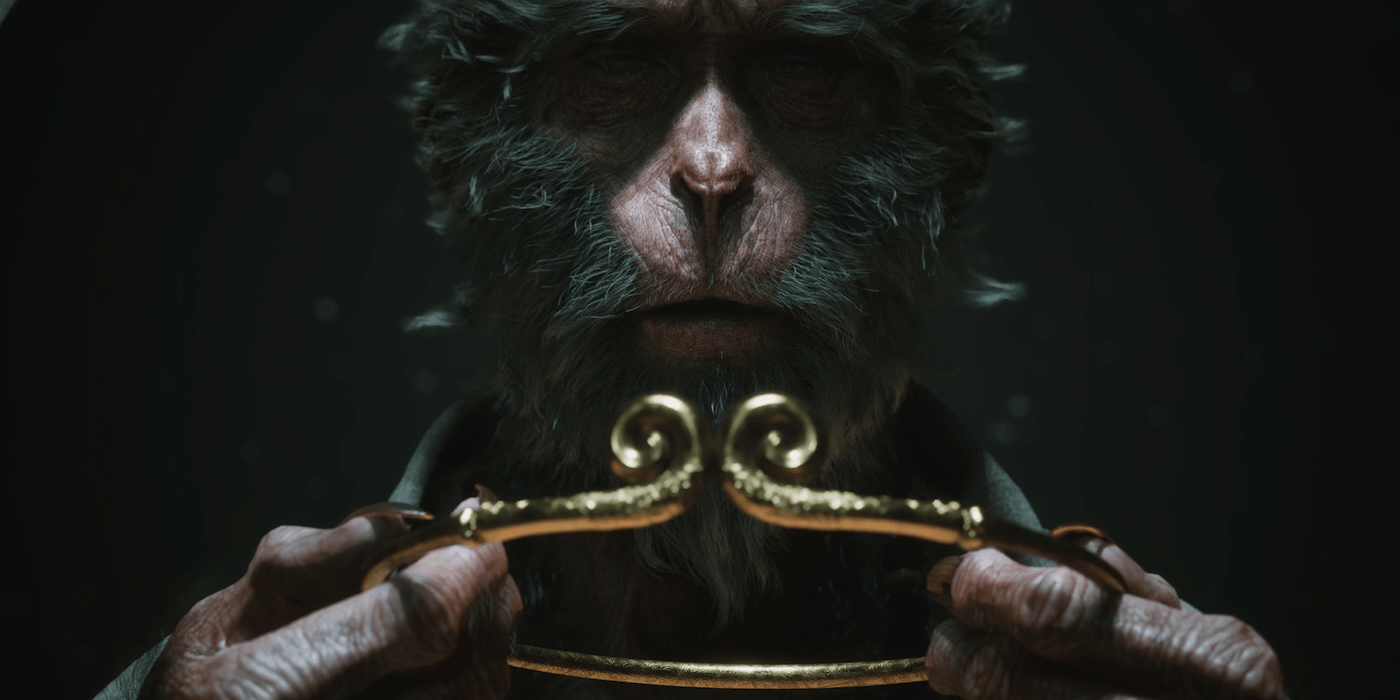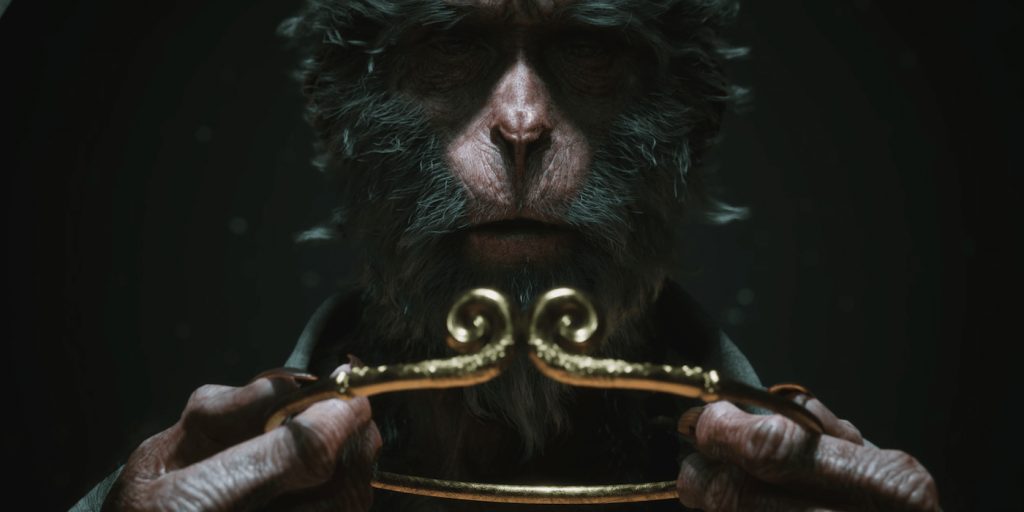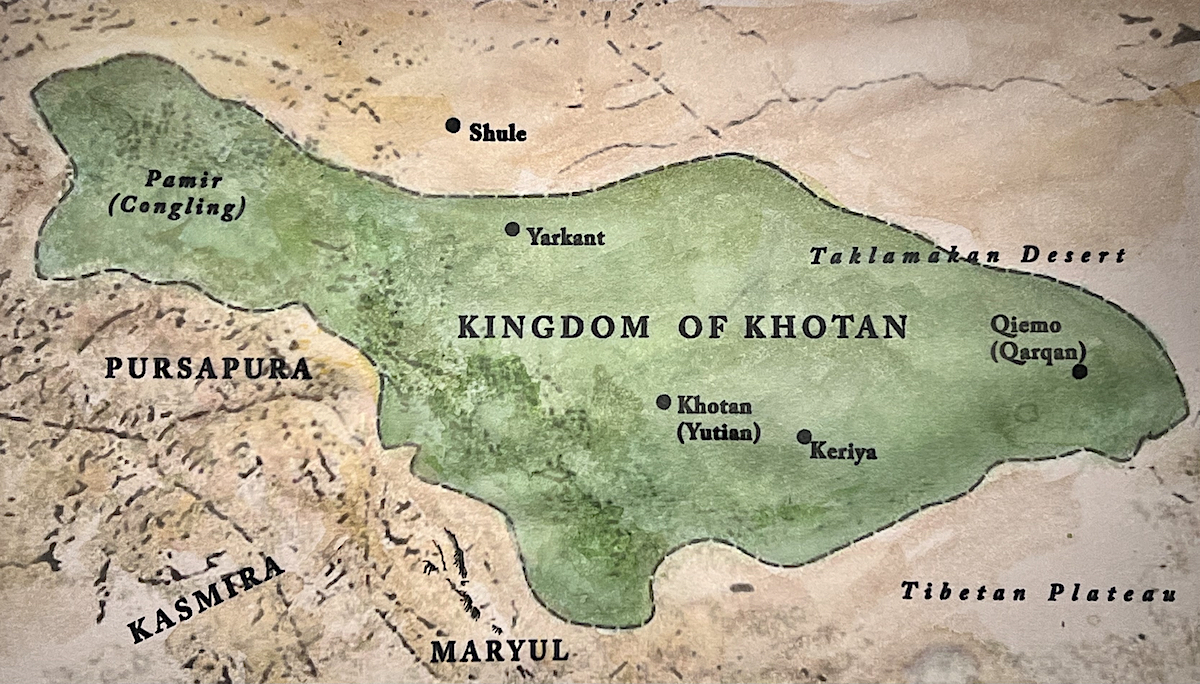The Timeless Ambiguity of Sun Wukong
Centuries after the publication of Wu Cheng’en’s Journey to the West, the novel’s trickster archetype finds renewed life in evolving mediums. The post The Timeless Ambiguity of Sun Wukong appeared first on Tricycle: The Buddhist Review.

Centuries after the publication of Wu Cheng’en’s Journey to the West, the novel’s trickster archetype finds renewed life in evolving mediums.
By Tim Brinkhof Sep 23, 2024 Screenshot from Black Myth: Wukong (Game Science, 2024).
Screenshot from Black Myth: Wukong (Game Science, 2024).Less than twenty-four hours after its highly anticipated release on August 20, Black Myth: Wukong logged more than 2.2 million concurrent users on the videogame distribution platform Steam, more than any other single-player game in history. Produced by Chinese developer Game Science over at least five years, Black Myth lets players take control of a superpowered, magic staff–wielding monkey in a story that acts as a kind of continuation of Wu Cheng’en’s well-known epic Journey to the West. The game’s success—the latest in a series of modern-day multimedia adaptations of the 16th-century novel—is a testament not only to the lasting and indeed international popularity of the text itself but also to the character of Monkey King, or Sun Wukong, in particular.
A touchstone influence on anime, Sun Wukong’s storyline already reads like the plot of a 21st-century manga. Born from a stone atop Flower Fruit Mountain, the sentient simian’s fear of death propels him on a quest that sees him acquire all manner of abilities, from shape-shifting to duplication. He also unlocks the secret of immortality—four different times. Having learned everything the mortal plane has to offer, the increasingly arrogant Wukong pits himself in opposition to the Celestial Court of the Jade Emperor, beating every single deity with ease until being bested by the Buddha, who imprisons him under a mountain until, five hundred years later, he joins Buddhist monk Tripitaka on his titular journey to the West in the hope of attaining the one thing he still lacks: enlightenment.
Aside from the inherently interesting aspects of Wukong’s personality, not to mention the enduring charm of Cheng’en’s storytelling, the Wukong craze is at least in part due to the influence he’s had—directly or indirectly—on writers living today, serving as the blueprint for beloved yet highly complex action heroes such as Son Goku (Dragon Ball), Monkey D. Luffy (One Piece), and Aang (Avatar). Of all the Wukong-related media that has appeared in the last few decades, few rivaled the sensation of 1995’s A Chinese Odyssey, which inserted a noncanonical chapter halfway through Cheng’en’s novel where the Monkey King, having lost interest in Tripitaka’s mission, is sent into the future by the Guanyin, the bodhisattva of compassion. Reborn as a marauding bandit called Joker, Wukong lives out an alternate life that ultimately makes him return to the past to rejoin Tripitaka at the cost of leaving behind a newfound love interest. While these contemporary adaptations of Wukong are by no means identical to the Monkey King of Cheng’en’s fantasy epic, their differences only highlight what makes the original so intriguing: his ambiguity and adaptability.
These qualities, it is worth noting, are evident in the many different ways that Journey to the West and Wukong have been interpreted over time. While initially viewed as a trickster who transverses the lands of the living and the dead—an equivalent or analogue to that of the raven or coyote in Native American and First Nations mythologies—Wukong would eventually come to be seen as an antihero, rebelling against heaven after a long period of exile. In the words of Julia Lovell, who translated Cheng’en’s novel into English in 2021, Wukong represented a “wrecking ball who battles the forces of tradition.” Taken in the context of China’s geopolitical and economic influence during the time of the epic’s inception, the Celestial Court of Journey to the West functions as a metaphor for bourgeois capitalism, with Wukong symbolizing the rebellious proletariat.
Still, several of Wukong’s most fundamental characteristics remain constant throughout numerous adaptations of Journey to the West. Chief among these is his ambiguity mentioned above. The many contradictions and self-contradictions baked into his personality and role in the novel allow him to mean not just different things to different people but also multiple things to the same person. This ambiguity is evident in his actions, dialogue, and even his fighting style. Wukong is, after all, a shape-shifter capable of assuming the appearance of a variety of creatures, deities, and demons. His two most iconic possessions, his magical, size-altering Ruyi Jingu Bang staff and Jingu headband—which Tripitaka can tighten by reciting a spell, allowing him to control the Monkey King in moments of disobedience—serve different purposes. Whereas the growing staff stands for Wukong’s ambition and physical strength, the headband symbolizes wisdom and restraint, and while the latter is initially used against Wukong, the Monkey King gradually learns to internalize its effect as the journey to Buddhahood teaches him when to hold back and when to unleash his unparalleled power.
While Wukong’s supernatural abilities certainly played a role in his growing international popularity—especially in a day and age where, partly due to the prominence of visual mediums like film and videogames, there is no shortage of stories revolving around action rather than dialogue—it’s his ambiguity, his reconciliation of contradictory forces, that make him such a compelling source of inspiration for 21st-century storytellers. Like Wukong, the monkey-tailed, cloud-surfing protagonist of Japanese artist Akira Toriyama’s best-selling manga Dragon Ball, Goku, grows from a bright-eyed, happy-go-lucky child into an adult confronted with the danger and destructiveness of his power. Aang, the hero of the American animated series The Last Airbender, takes the comparison further still. Just as Wukong violates the duality between life and death, man and animal, mortal and god, so does Aang—whose story takes place in a world where people can control only one of the four elements of water, fire, earth, and air. At the same time, he is the sole individual capable of manipulating all four. As the latest reincarnation of an ancient spirit destined to save the world from the totalitarian Fire Lord, you’d expect Aang to be a self-serious character, but just as Wukong combines godlike strength and saintly wisdom with vulgar monkey antics, so do Aang’s spiritual obligations contrast with his childlike trickster demeanor.
The many contradictions and self-contradictions baked into his personality and role in the novel allow him to mean not just different things to different people but also multiple things to the same person.
Perhaps no other figure in modern pop culture channels the spirit of the Monkey King more fully than One Piece’s Monkey D. Luffy. Created by Japanese artist Eiichiro Oda in 1997, One Piece —which to this day is the world’s longest book, comprised of more than 1,100 chapters and counting—has since become the world’s best-selling manga, with more than 500 million copies sold. Set in a world covered by the open ocean and populated by pirates, the story follows Luffy on his quest to find the titular One Piece, a mysterious treasure left behind by the long-dead pirate king, Gol D. Roger, and thus inherit the latter’s title.
Aside from his name, Luffy resembles Wukong in terms of his abilities as, having eaten a magical fruit that imbued his body with the properties of rubber, he is able to stretch his limbs in a manner not unlike Wukong’s Ruyi Jingu Bang. Then there’s Luffy’s personality. Like Goku and Aang, his approachable demeanor contrasts with his unfathomable powers. Far and away the dumbest member of his motley crew—despite his seniority and the accompanying responsibilities—Luffy’s stupidity frequently borders on the kind of slapstick comedy that anime fans know all too well. Yet what Luffy lacks in intelligence, he more than makes up for in unconventional wisdom. Displaying surprising emotional maturity, his combination of impulsivity, intuition, and aversion to injustice and cruelty time and again lead him to put his faith in people that the rest of his crew erroneously deem untrustworthy, or pick a fight with a force so powerful that no one in their right mind would dare to challenge them. And, as with Wukong, it’s implied that these contradictory qualities do not exist in spite of one another but are in fact connected.
Luffy’s ambition to find the One Piece and become the next pirate king—a goal so lofty others laugh at the sheer implausibility—and the gradual but consistent progress he makes toward that goal throughout the series, developing from an ordinary boy into a seafarer of truly Wukong-esque proportions, also mirror Wukong’s transformation from arrogant primate into the Great Sage Equal to Heaven and, subsequently, Victorious Fighting Buddha.
On top of all this, Luffy resembles Wukong not only in character but also in the role he plays in his own story. Like Wukong, Luffy’s destiny is to break boundaries that the powers that be wish to remain unbroken. In another nod to Cheng’en, Luffy’s ultimate enemy in this endeavor is none other than heaven: the so-called World Government, ruled by an aristocratic class of “Celestial Dragon” nobles and guarded by a council of demons, whose palace sits atop a giant rock wall dividing the world’s oceans in half. Although One Piece has yet to conclude, longtime followers of the series predict that the final chapters will see Luffy overthrowing the World Government and, in doing so, tearing down the wall to reunify the oceans of the world. Luffy’s eros becomes his quest for physical freedom, closely matching Wukong’s journey toward enlightenment. Luffy embodies this journey for meaning so much that Oda even dubs his character with the dharmic nickname—the Warrior of Liberation.
While completely specific to the story of Journey to the West, Cheng’en’s archetype becomes universal through its idiosyncrasies—creating a character that, as Hongmei Sun writes in Transforming Monkey, is so unique there exists no equal in all world literature. The character equivalent of a metapicture—an illusory image that looks like two different things at the same time, like certain paintings by Salvador Dalí or the drawings of M. C. Escher—Wukong’s ambiguity and complexity make him that much more distinct.
Therefore, the reason we keep talking about the Monkey King centuries after Journey to the West was written isn’t that he is a prime example of character embarking on a hero’s journey that has been repeated across monomyths of different cultures and time periods but that he’s an archetype in and of himself: an archetype to end all archetypes.
![]()
Thank you for subscribing to Tricycle! As a nonprofit, we depend on readers like you to keep Buddhist teachings and practices widely available.
This article is only for Subscribers!
Subscribe now to read this article and get immediate access to everything else.
Already a subscriber? Log in.

 Koichiko
Koichiko 































